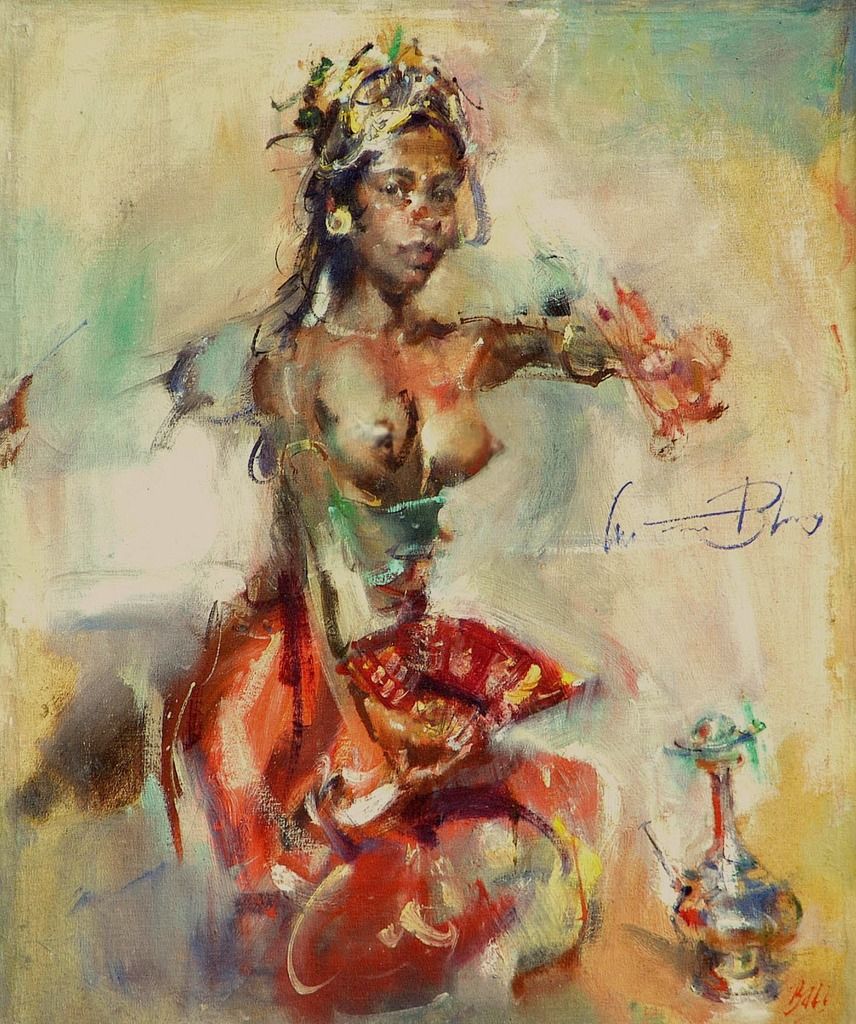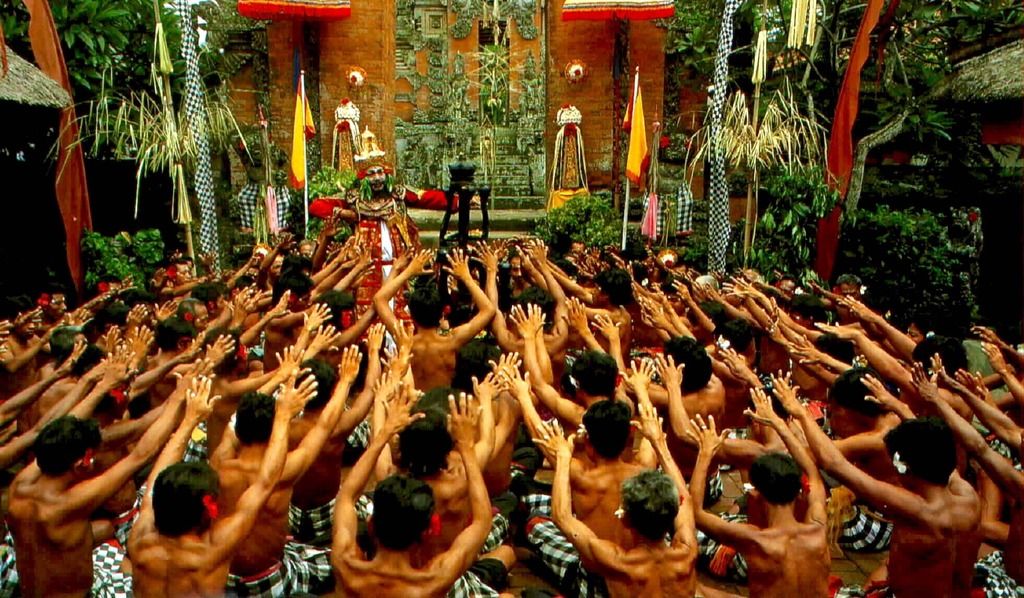In 1981 I made my first visit to Bali. I had a long three-week vacation from my job in Hong Kong which I was splitting equally between Bali and Tokyo. I had booked three nights at the Oberoi Hotel near Kuta which I believe is still there. But it was Ubud that I really wanted to visit and so I had then booked a week at the Tjampuhan Hotel just outside Ubud - across the bridge and up a slight incline on the right. I quickly became so captivated by Ubud that I cancelled the Japan part of the trip and spent the rest of that vacation in Ubud.
The Tjampuhan Hotel had no electricity, accommodation was in simple huts dotted on the hillside, showers were buckets which we filled with water and quickly hoisted above our heads before the water all ran out – but it did have a lovely Hollywood-style pool. Breakfast was fresh coffee, fruit and delicious banana filled-pancakes left on an hibiscus-blossom covered tray outside our door. Down the hill on the right over the bridge and clinging to the hillside was Murni’s Warung, a lovely restaurant where my memories of fruits doused in fresh yoghurt and local honey remain with me to this day.
More fascinating for someone from the repressed morality of the west, around 5:00 pm young men would come in from the fields and the rice paddies, completely disrobe and shower or bathe wherever fresh water could be found. Several came to the water tap by our pool; others to the stream down the hill. The sight of those beautiful utterly shameless naked brown bodies was so new and unusual for me – and I fear I became a bit of a voyeur. As with so many experiences as a newcomer to Asia, I felt as though I had stepped through a looking glass into a totally different world.
I remember many walks through the rice paddies hearing the faint sound of gamelin orchestras rehearsing almost everywhere. So entranced was I by life in that part of the island I was to return 9 more times, making two visits each year and becoming quite a well known figure in Ubud!
I had been aware before that first visit that Ubud was a centre of many painters, most Balinese and most trained by a number of European and American artists who had lived there. Over the years I bought several, including one from an artist whom I watched create the painting over several days. Just down from the Tjampuhan on the right before the bridge lived a fascinating eccentric character, an artist named Antonio Blanco. Well into his 70s, I think, he had a big studio in his house, the walls covered in paintings mostly of naked young ladies. Of Spanish/American descent, he also had a bevy of bare-breasted young ladies flitting in and out almost constantly. But no young men, alas!
I believe Blanco was to be the last of the group of western painters who were to make their homes and spend their lives in Bali. After his death, his home was turned into a Museum which now houses many of his works.

I mention the Tjampuhan Hotel for one reason - the main part of the hotel as you turn off the road was the actual house in which Walter Spies lived for several years. The pool allegedly was constructed for the heiress Barbara Hutton who had said she could only visit if she could relax in a pool similar to the one in her home. For whatever reason, she had fallen madly in love with Spies and took him to Cambodia to see Angkor Wat. But despite the pool, she never made it to Bali. No doubt she realised that Spies’ romantic interests lay elsewhere and she hightailed it off to Persia. I am told the pool has now been converted into a lily pond.
Spies’ influence on Bali was not merely confined to painting and music. He loved Balinese dance. One of the most spectacular and famous now is the kecak where a hundred men sit in a circle chanting “chak, chak-a-chak-a-chak-a-chak” whilst scenes from the Ramayana are acted out.

Spies actually choreographed this dance as he needed something more dramatic than the traditional dancing for a film he was making about Bali.
Sadly none of my photographs from those visits have lasted, presumably having been printed on inferior paper. I adored my visits, on only one of which I had a long tryst with a young Balinese. 20 years after my last visit, my boyfriend of that time was desperate to visit the island. Reluctantly I agreed, for I was well aware that the island would have been almost totally transformed as a result of mass tourism. Sadly I was right. In 2005 I found most of the charm had gone from Ubud. But then isn't that how we all feel when we return to a place which has fascinated us decades earlier?